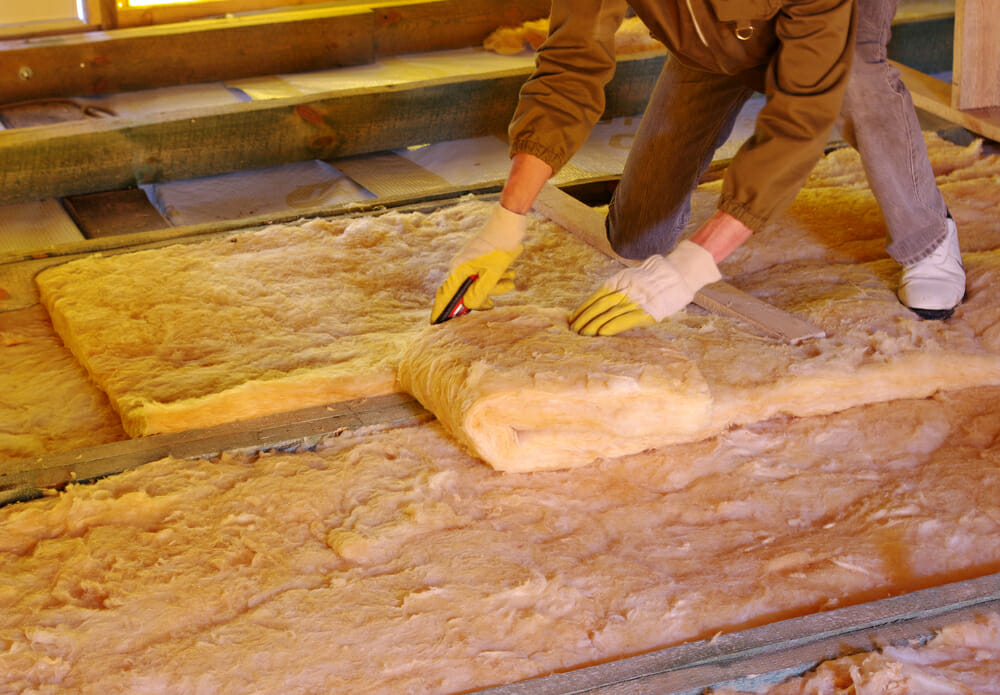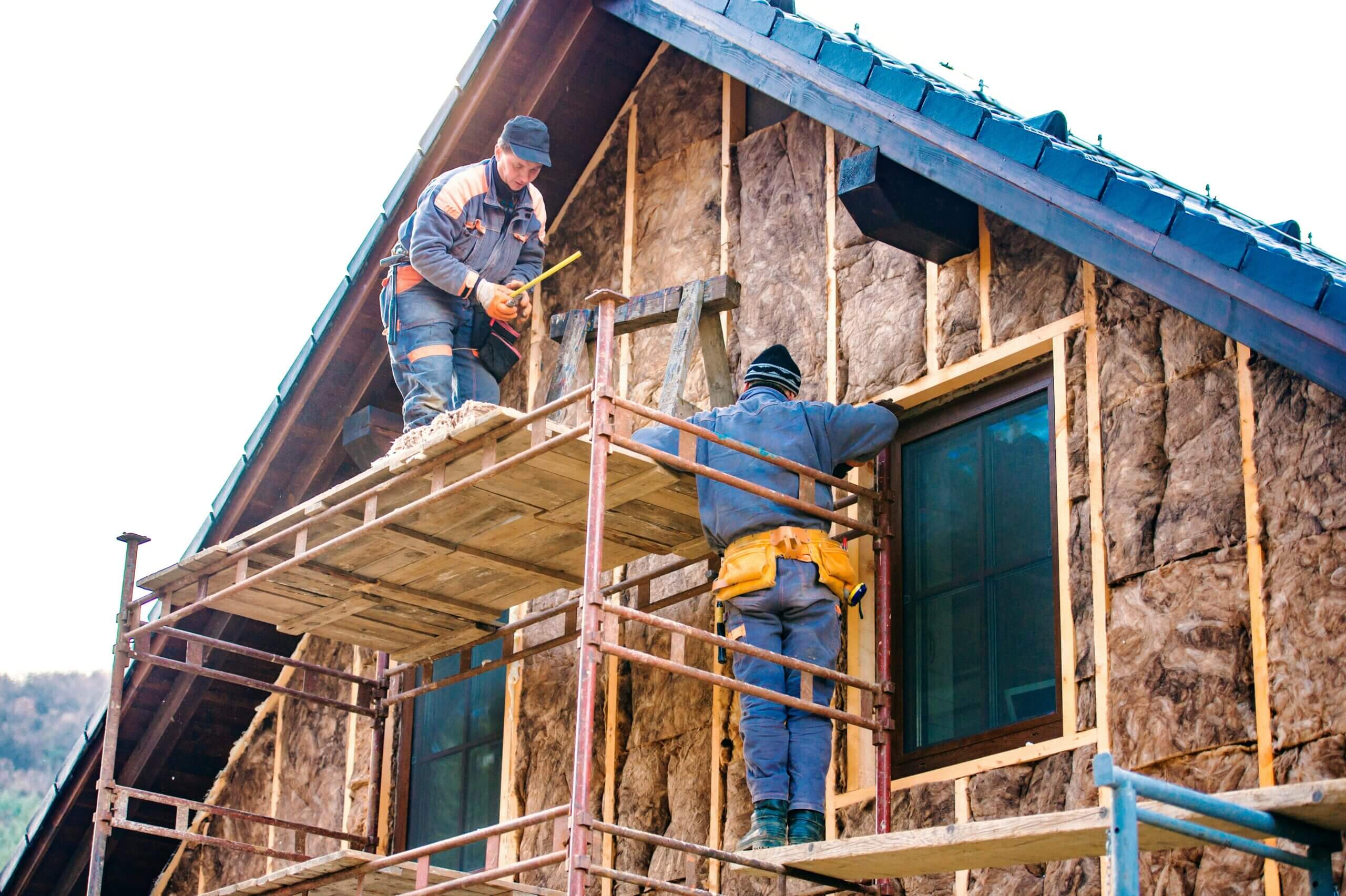Average Cost of Home Insulation by Square Foot
When you’re planning to insulate your home, the biggest cost factor is how much space you need to cover. On average, it costs between $1,000 and $2,500 to insulate a 1,000-square-foot home, which breaks down to an insulation cost per square foot of $0.50 to $2.50. Your final price will depend on the type of material you choose, the area you’re insulating, and whether you hire a pro or take the DIY route.
Insulation costs per square foot can vary a lot by material. Here’s a breakdown of average prices:
- Low-end materials: $0.30 to $1.50
- Mid-range materials: $0.90 to $1.80
- High-end materials: $1.00 to $2.50
Cost by Material & Type of Insulation
Insulation costs vary widely depending on the type of material you choose. Since insulation needs to be a certain thickness to work effectively, it’s sometimes measured in board feet instead of square feet. One board foot equals one square foot of material at one inch thick. Here’s a look at common insulation types and what you can typically expect to pay per square foot:
Fiberglass Insulation
Cost: $0.30 to $1.50 per square foot
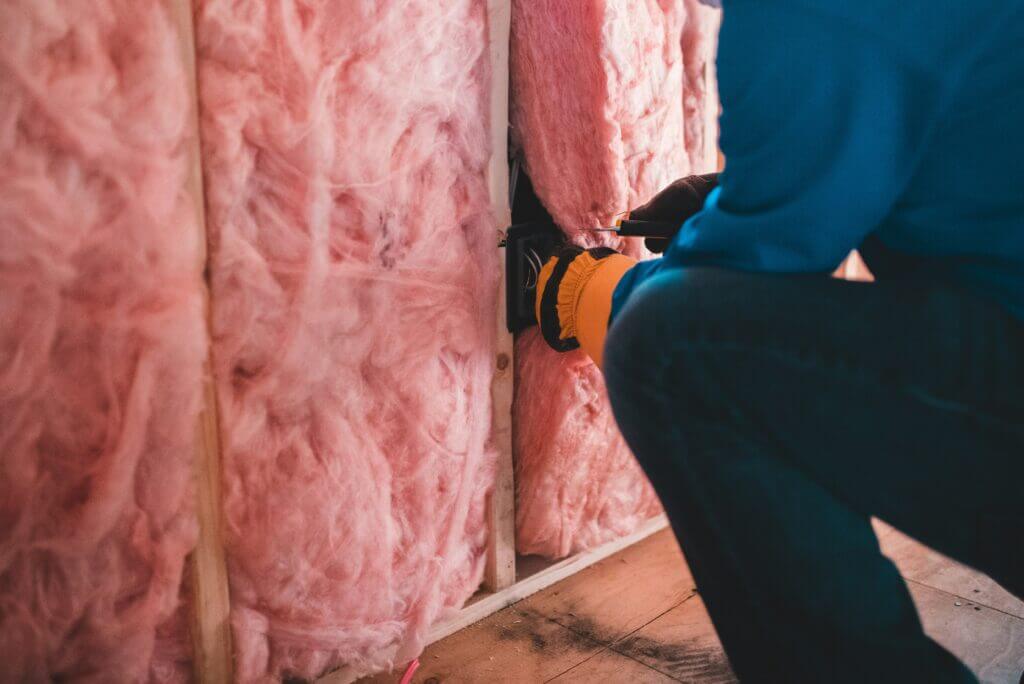
Available in batts, rolls and loose-fill options, fiberglass insulation is one of the most popular and affordable choices for home insulation. It comes in various forms, with batt insulation being the most common. Fiberglass is also available as loose-fill, which is used for attics and other hard-to-reach spaces.
Cellulose Insulation
Cost: $0.50 to $2.40 per square foot
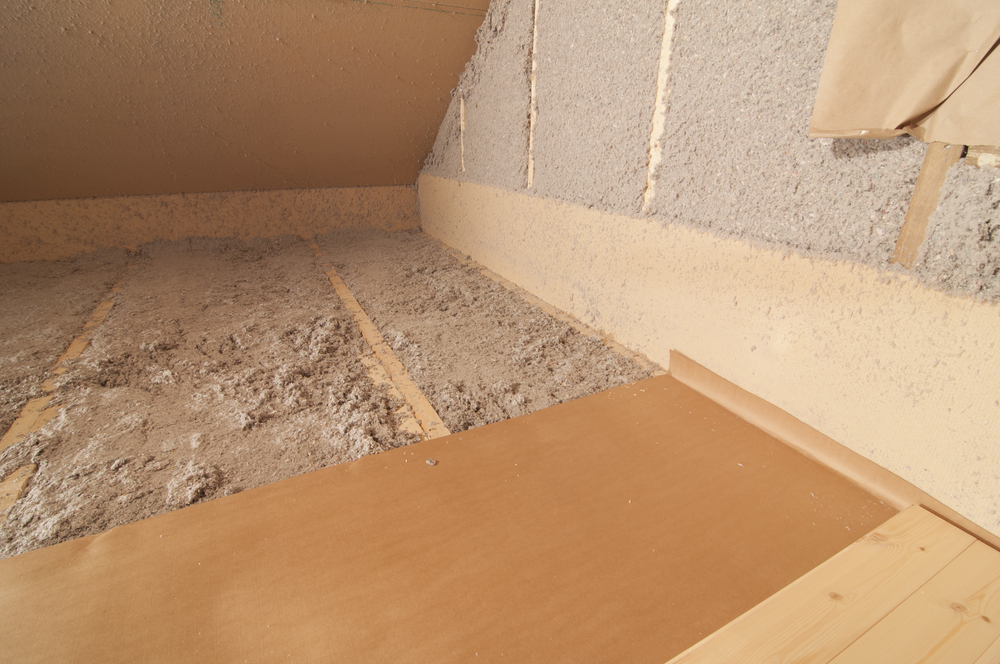
Cellulose is an eco-friendly option made from recycled paper and treated for fire resistance. It’s available as a loose-fill type product that is typically used for blown-in insulation in attics and walls and is known for its ability to fill gaps and reduce air leaks.
Mineral Wool Insulation
Cost: $1.40 to $2.10 per square foot
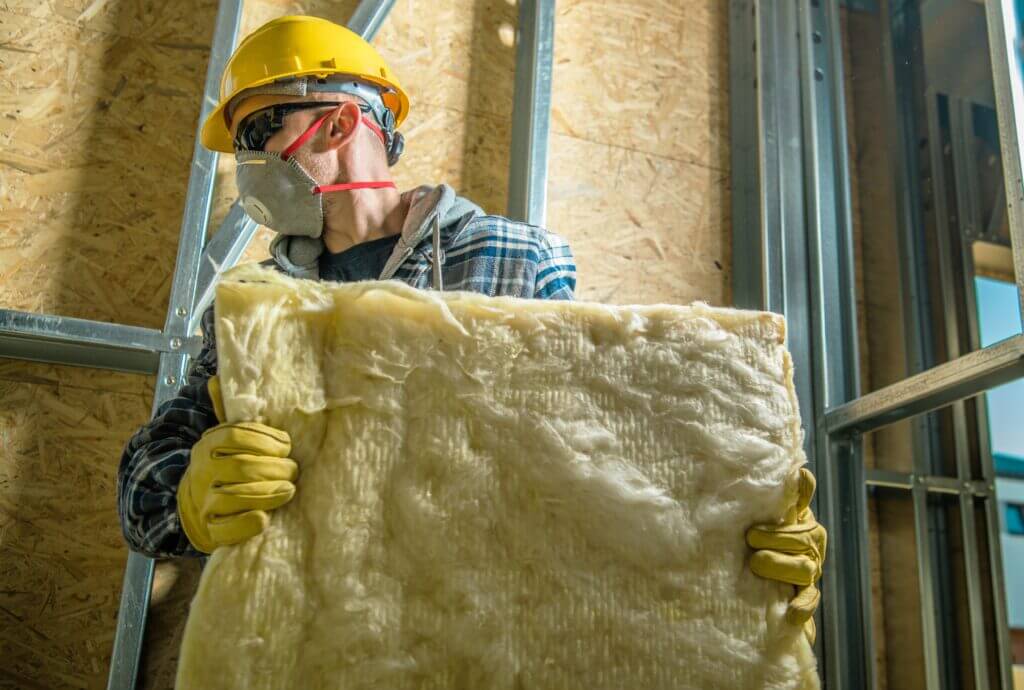
Mineral wool, also known as rock wool, provides excellent fire resistance and soundproofing qualities. It’s available in batt or loose-fill form that is blown in, making it a versatile option for both walls and attics.
Spray Foam Insulation
Cost: $0.40 to $1.50 per square foot
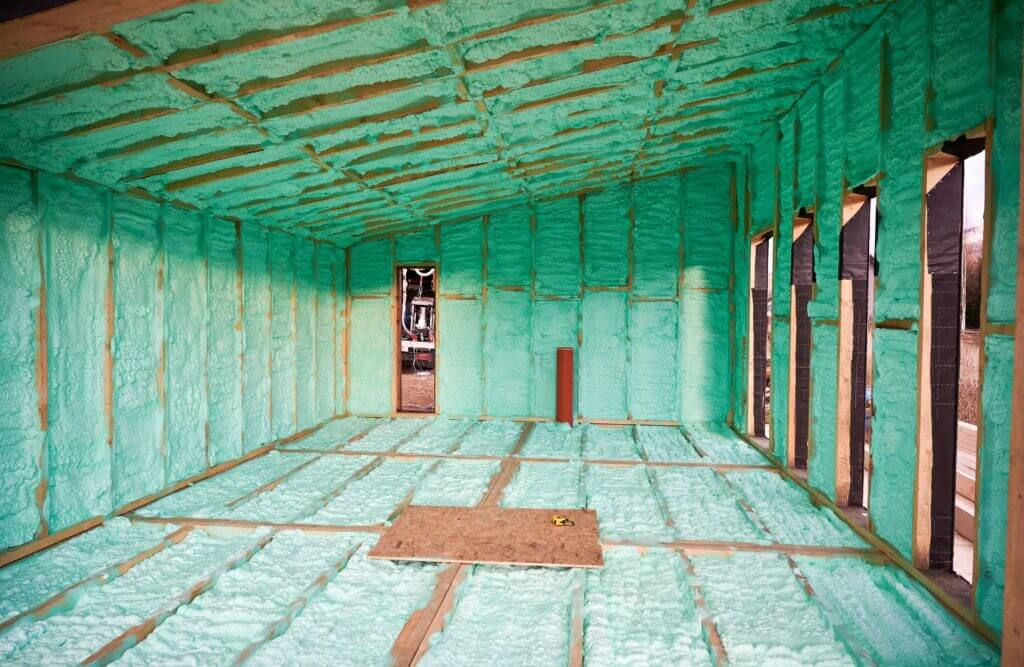
Spray foam is one of the most effective insulation types. However, the cost of spray foam insulation per square foot tends to be higher than other types. This open-cell or closed-cell material expands upon application, filling gaps and cracks for superior air sealing. Closed-cell foam has a higher R-value and is more expensive than open-cell foam but offers more insulation power. Open-cell spray foam, on the other hand, is a more budget-friendly option.
Rigid Foam Insulation
Cost: $0.25 to $2.00 per square foot

Rigid foam insulation is a solid option for areas like basements where moisture can be a concern. It comes in board form and delivers a high R-value per inch of thickness, making it an efficient choice. These boards are usually made from expanded or extruded polystyrene, or polyisocyanurate.
Blown-in Insulation
Cost: $0.60 to $1.50 per square foot
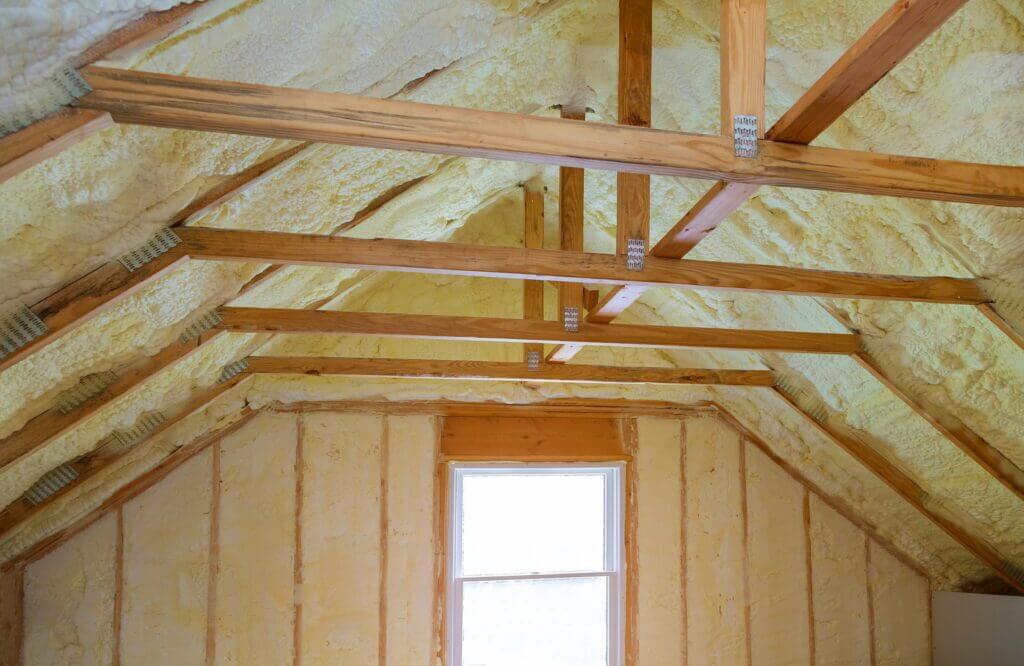
Blown-in insulation is ideal for attics and hard-to-reach spaces. Blown-in refers to the way the insulation is applied, but the material can be made of fiberglass, cellulose, or mineral wool. It’s known for its ability to fill gaps and voids, and the cost of blown in insulation per square foot makes it a great mid-range option.
Insulation Cost Per Square Foot by Area of Home
Your insulation costs will also vary depending on the part of your home you’re insulating. Some areas are easier to access than others, which can impact both material and labor costs.
Attic Insulation Cost Considerations
Blown-in cellulose or fiberglass is often used in attics, while spray foam provides better coverage in tight spaces. However, it usually costs more to install insulation in these areas. You can expect to pay between $0.50 to $2.50 per square foot for attic insulation with these materials.
Roof Insulation Pricing
Roof insulation is often paired with attic insulation, especially in colder climates. Spray foam or rigid foam boards are popular choices for roofs and attics in these regions. In warmer climates, fiberglass or cellulose is more common. These materials generally fall within the same price range as attic insulation, so you can expect to pay between $0.50 to $2.50 per square foot for roof insulation.
Cost of Garage Insulation
Garages, including garage doors, can also benefit from insulation. This helps reduce energy loss and keeps temperatures more stable, especially useful if you’re storing temperature-sensitive items or turning the space into a living area. Insulating a garage typically costs between $0.50 to $1.25 per square foot.
Wall Insulation Cost
Wall insulation can be more complex, especially if you can’t easily access the wall cavities. Spray foam and fiberglass batts are commonly used, while blown-in options work well for existing walls. Wall insulation usually ranges from $1.00 to $4.00 per square foot.
Pipe & Ductwork Insulation Pricing
You may also need to insulate your pipes or HVAC ductwork. This is especially important in colder climates to prevent energy loss and protect your system. Pipe insulation, made from fiberglass, foam, or rubber, costs between $0.50 to $2.00 per square foot. Insulating HVAC ducts improves energy efficiency and costs around $0.80 to $1.50 per square foot, depending on whether they’re located in a conditioned or unconditioned space.
Factors That Influence Insulation Costs
Several factors affect the cost of insulation beyond just the material. These include:
- Home Size: Larger homes will require more insulation, increasing costs.
- R-values: The higher the R-value or thermal resistance of the insulation material you choose, the more expensive the insulation. A higher R-value improves energy efficiency.
- Difficulty of Installation: If your home has a complex layout, tight spaces, or unique features, expect higher installation costs due to the extra labor involved.
- Maintenance: Some insulation types, such as cellulose, may require more maintenance over time.
- Permits: Certain insulation projects, particularly those involving spray foam, may require permits depending on local regulations.
- Location & Climate: Homes located in extreme climates will benefit from materials with higher R-values, raising the material and installation costs.
Additional Costs to Consider
In addition to the base insulation cost, there may be extra expenses to consider depending on your project’s needs:
- Labor: Professional installation adds to the cost, depending on the complexity of the job.
- Additional Materials: Caulking, radiant barriers, and weather-stripping are often necessary for effective insulation and can add to your total costs.
- Removal of Existing Insulation: If you are replacing old insulation, the labor cost for removing your old insulation can range from $0.50 to $1.50 per square foot.
Savings Considerations
While the initial insulation cost for your insulation project might seem high, the long-term savings are significant.
- Lower Utility Bills: Energy-efficient insulation helps maintain your home’s temperature, reducing heating and cooling costs.
- Government Rebates: Many states and municipalities offer rebates for energy-efficient home upgrades, which can offset insulation costs.
- Improved HVAC Performance: Proper insulation helps your HVAC system run more efficiently, potentially extending its lifespan.
By understanding insulation costs and material options, you can make informed decisions on the best insulation type for your home. Whether you’re insulating the attic, walls, or pipes, investing in quality insulation will pay off in energy savings and increased comfort for years to come.
